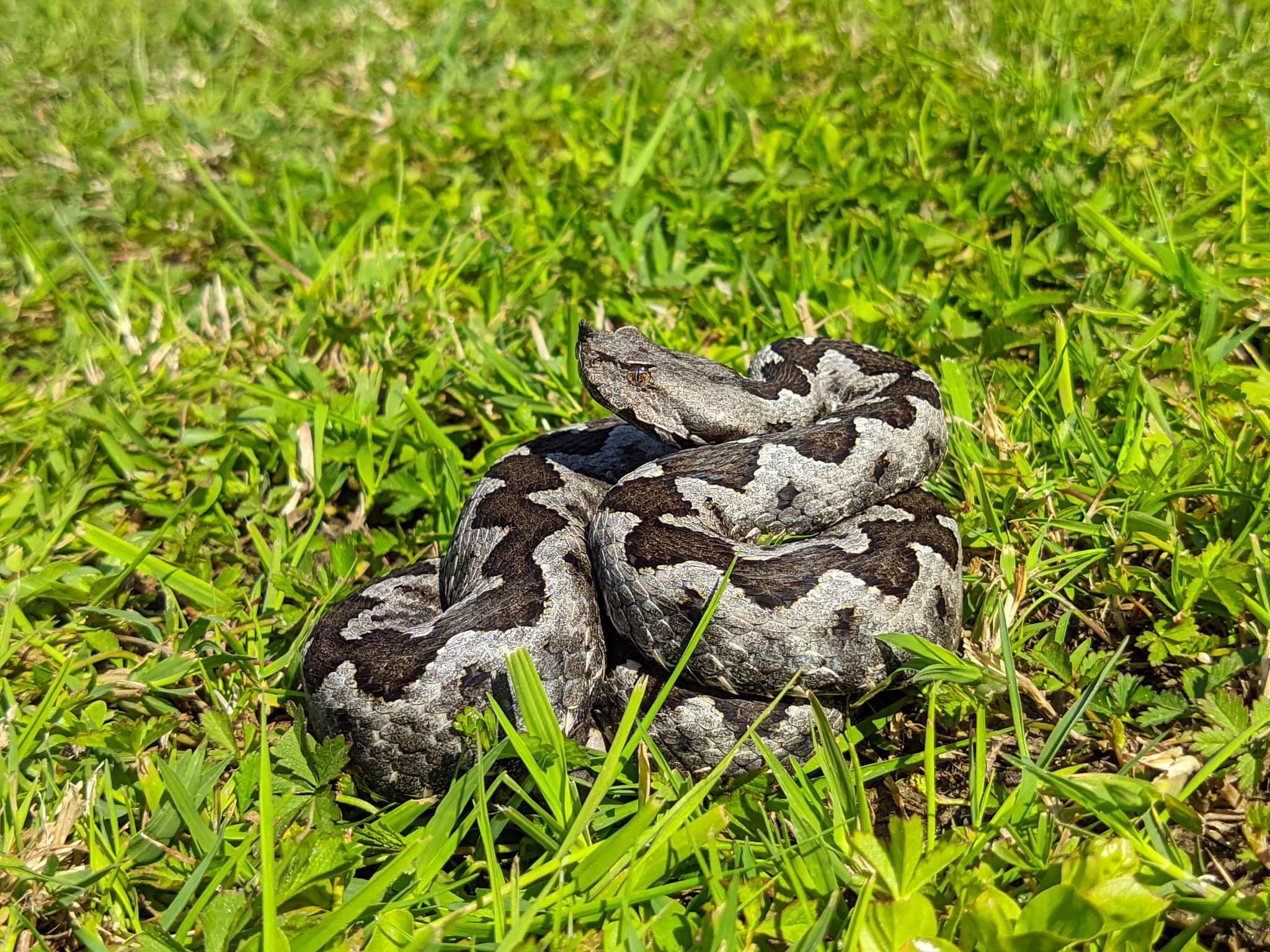Viper - Vipera ammodytes
Name: Vipera ammodytes – viper
Appearance: The males are usually light grey with a distinguished dark zig-zag line along the body while the females are mostly brownish grey to orange with a dark brown and not so contrastingly coloured line along their body. In males, there are also clearly present patterns along the dorsal (abdominal) and lateral (side) part of the head while, in females, they are feebly visible or not present at all. Juvenile individuals have similar colours and patterns as the mature ones.
Body length: 65-95cm
Body weight: 220 g
Nutrition: carnivore
Mating season: April, beginning of May
Number of young: 4-20
Prevalence areal of viper, one of the best known poisonous snakes in the Dinarides, is spread from the south of Swiss and north of Italy through Slovenia, Croatia, Bosnia and Herzegovina, Montenegro, Serbia, Albania, North Macedonia, Bulgaria, Romania all the way to Caucasus. It inhabits dry, rocky habitats, places overgrown with thorns and low vegetation, as well as the edges of light forests.
The viper’s feature, that distinguishes it from other snakes in the Dinarides, is the horn on the top of its snake’s snout. The horn is a skin formation, made of connective tissue and its role is still unknown. The head is triangular and, like in other poisonous snakes, the tail is short in comparison to the rest of the body.
The viper sleeps its winter sleep (hibernation) that it normally gets out of by the beginning of March. The males get out of the hibernation first and, ten days after, females do, too. Mating is preceded by the battle of males for the female. They mate during April and May. Their reproduction is ovoviviparous, or the females give birth to 4-20 completely formed young, usually in August and September. This very feature is what the genus Vipera got its name after. Vipera comes from Latin for vivus (alive) and pario (give birth). The second part of the name ammodytes, comes from Greek words ammos (sand) and dutes (hide in the ground hole). Common name jump snake, comes from the superstition that the snake can jump. This belief is based on the fact that viper climbs the trees looking for birds and good places for sunbathing. Through human inattention, it can fall from the tree and react aggressively, which may seem as if it jumped on someone.
Although it cannot jump, the viper can rapidly throw out 40 % of its body length during the attack, which makes it a very dangerous predator.
It is usually active during the day and, during summer, in twilight, too, and even during the night. It is searching for food in the afternoon. It normally feeds on small mammals, reptiles and birds. The prey is killed with poison. The viper is considered to be the most poisonous snake in Europe and its young individuals are poisonous, too. It should be noticed that the viper will attack a man only in self-defence, when it feels its life is threatened.
Its poison is lethal for a man unless providing the antidote in due time. The very bite is not painful for a man but the symptoms develop very soon after – headache, vertigo, difficult breathing, racing heartbeat, vomiting.
The viper is relatively slow but it flees fast when disturbed. If it is not in a situation to flee, it hisses very loudly or camouflages and stiffens.
Typical for this species is that they do not like do get wet so they can be chased away with water pouring.
By the beginning of the XX century, Austria-Hungary introduced small Indian mongoose to some of Croatian islands with the aim of controlling the snake population, primarily viper. However, not everything turned out the way it was planned. After the islands were missing their snakes, the mongoose began feeding on other useful (poultry) and/or rare animals. Not having their natural enemies, the number of mongooses raised. Extending their areal from the islands, the mongooses appeared in the coastal parts of Croatia, Montenegro and south of Bosnia and Herzegovina, too, where they are still quite numerous and cause significant harm to biodiversity.

